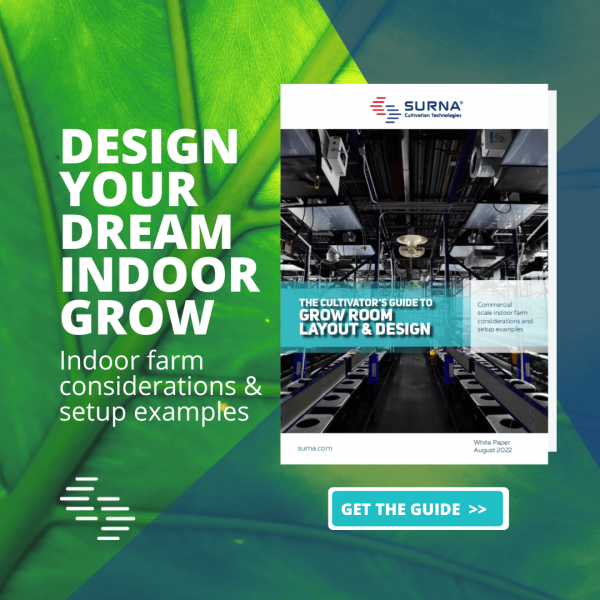The Surna Reflector includes a glass lens, as do most reflectors designed for indoor cultivation. Before you decide to remove that lens let’s look at the reasons why, in this case, the glass is actually a good thing, creating a number of benefits for your grow.
We often hear that growers want to remove the glass to increase the light transmission to the plant canopy which, while potentially true, is often a mistake in the long run. Standard glass reflects up to 6% of the light transmitted through it but can also become dirty, blocking even more light. Many issues were considered when designing the Surna Reflector so as to maximize the advantages of glass while minimizing the downside.
The Surna Reflector uses low-iron glass
Low-iron glass is very transmissive, allowing more light through than standard glass used on reflectors and minimizing the downside of keeping the glass on. Standard glass reflects 6% of light within PAR whereas low-iron glass only reflects 3% of the light back into the reflective cavity. This reduction of lost light means more light is reaching the plant canopy.
Light loss is less than you think
Some of the light that hits the glass is reflected back into the reflector, rather than reaching the plant canopy. However, the light is not completely lost when it is reflected back, the light that is reflected simply bounces off the glass and back in the reflector housing.
The Surna Reflector is lined with polished aluminum material so that the light that is bounced off the glass can be reflected back towards the plant canopy again for another pass through the glass. While some light is absorbed during this process, the loss of light isn’t as impactful as one might think. With the Surna reflector much less than 3% of PAR light (see above) is lost while using the glass.
Glass keeps the reflective material clean.
In open-air reflectors, the reflective material and bulb inside the reflective cavity can quickly become dirty, lessening its reflective capacity by a much larger percent than is lost through using glass. Normal activity, such as foliar sprays, within a grow room can cause damage to the reflective liner, thus blemishing the pristine reflective surface. Once dirty or damaged the reflective material can be difficult or impossible to clean to the factory reflectivity. By placing a glass barrier between plants and the reflective material, the reflector will maintain its ability to direct maximum light to the plant canopy for a longer period of time.
Air Filters keep the glass clean
The air and water-cooled versions of the Surna Reflector include Merv 13 air filters. These filters clean the air before it enters the reflective cavity, keeping the low-iron glass as clean as possible, which keeps light output consistent year round.
It is important to note that the glass surface will still need to be cleaned occasionally depending on how much fine dust is present in the cultivation facility – less often for hydroponic gardens and more often when using soil.
HID bulbs are designed for enclosed fixtures
The ideal operating temperature of HID bulbs can typically only be reached when operating within an enclosed fixture. Exposing these bulbs to room temperatures, or actively cooling them, reduces the bulb operating temperature and decreases the amount of light within PAR (useable light) created. Based on a third-party test performed on the Surna Reflector, this shift can result in up to 10% efficiency loss by creating less useable light. The Surna Reflector includes a quartz tube around the bulb that isolates the bulb and creates a micro-climate around the bulb. This micro-climate allows the bulb to run at its ideal temperature and create more light within PAR. However, the full effects of the quartz tube can only be realized when the glass is left on the reflector.
An important thing to remember is that light loss matters and reducing it as much as possible is critical to a successful cultivation facility. The same amount of energy will be used to create light (simply from having the bulb turned on) whether all or none of that light reaches the plant canopy. A dirty reflective liner has a huge impact on the amount of light that is directed at and ultimately reached the plants. Losing energy through the transmission of light is one of the most common forms of waste we see in a grow room. The Surna Reflector has been designed to help you eliminate light loss while also increasing light production.

